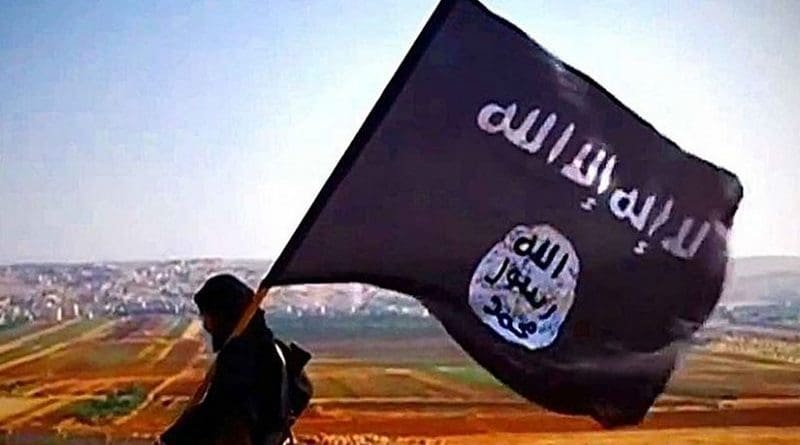Threat Of Radicalization In Syria’s ISIS Prisons – Analysis
By Saman Ayesha Kidwai and Manohar Parrikar Institute for Defence Studies and Analyses (MP-IDSA)
Tens of thousands of ISIS detainees are housed in temporary prison camps and detention centers in Syria and Iraq by US-backed Kurdish Syrian Democratic Forces (SDF).1 Charles Lister, the Director of Syria and Countering Terrorism and Extremism Programs at the Middle East Institute, warned that the international community is ‘doing nothing to prevent the current generation of detainees from wanting to continue to fight if they get out, and creating a melting pot for the next generation.’2
As reported by Militant Wire, technology and illicit financing are being used by terrorist sympathisers to raise funds for ISIS spouses and children in Syria through encrypted Telegram channels and digital wallets like QIWI. The funds are being raised for two primary reasons—smuggling former detainees from detention camps and targeting low-security detention centres managed by Kurdish militias.3 There are reportedly at least 14 such facilities in North-East Syria.4
The US-backed SDF fighters confront multifaceted challenges of managing these makeshift prisons in a war zone. These areas have also faced large-scale prison breaks. The attack at Gweiron prison in January 2022 was aimed at freeing over 3,000 detainees, including 700 minors.5 ISIS’ news agency, Amaq, claimed that 800 terrorists had been freed.6 The SDF successfully traced around 100 detainees. Such attacks on prison facilities are reminiscent of the prison break in July 2013, when more than 600 prisoners were freed from detention facilities like Abu Ghraib, many of whom later were at the forefront of the military assaults launched by ISIS during its rise to power.
Furthermore, the Kurdish forces appear to have been thrust into a position reminiscent of American forces stationed at Camp Bucca and Abu Ghraib prison in Iraq. There, the confinement of some of the most radicalised elements aligned with extremist Salafist ideology in one space fed the pool that eventually emerged as elements of Al-Qaeda in Iraq and, later, ISIS.
Camps in Al-Hol, in the eastern al-Hasaka governorate, have been at the epicentre of continued recruitment, radicalisation, and violence by ISIS followers.7 As per reports, battle-hardened former fighters are sharing space with impressionable teenagers in converted warehouses and schools.8 Alarmingly, murders, sexual abuse, and unrestricted transit within and outside the detention camps underscore security gaps. Approximately 24 killings have occurred inside the Al-Hol camp alone from January to July 2022, including of a humanitarian worker, where spouses, widows, and children of ISIS fighters have been detained.9
This overflowing space with more than 65,000 residents is where apparently radicalised women are molding the extremist worldview in their wards.10 Support for re-establishing the ISIS’ physical caliphate is allegedly being sustained in these camps, through social media indoctrination, with access to phones made easy, possibly by corrupt patrolling officers.11 Cumulatively, these factors have the potential to fuel online violent extremists and terror propagandists, reigniting the diminishing threat of ISIS fighters.
The refusal of several governments, meanwhile, including the British and French, to take back the ‘caliphate’ members to face justice in their countries of origin could foment humanitarian and security crises.12 Timothy Alan Betts, the Acting Special Envoy for the Global Coalition to Defeat ISIS, sounded alarm in July 2022 when he stated that
Conditions are so harsh in northeastern Syria in particular that we are seeing a greater openness by residents to ISIS’s return now than at any time since the fall of the physical “caliphate” in 2019. The more ISIS can leverage local support to train and reorganize; the more sophisticated and frequent their efforts will be to free detainees and recruit in the displaced persons camp.13
The United Kingdom, on its part, runs de-radicalisation programmes like Prevent. Reports flag that authorities have struggled to run separation centres at high-security prisons like HMS Belmarsh efficiently.14 By 2021, only 10 per cent out of 450 British ISIS recruits had been prosecuted by judicial authorities.15 The challenge could grow further in the likelihood of repatriation of remaining fighters and their families. US administrations have called on the UK to take back their nationals from Syria. Reports note that around 16 women and 30 to 60 children—all British nationals—are lodged in SDF-run facilities in Syria.16 While at least 900 British citizens travelled to join ISIS, the precise number of male combatants that remain in detention camps is not clear.
Meanwhile, in Morocco, by July 2021, over 300 ISIS prisoners were lodged in prisons. The authorities are implementing a three-month course focused on economics, religion, and vocational training to ensure their gradual reintegration into the society.17 The Moroccan prison authorities have undertaken this initiative since 2017, with only one person out of the 156 graduates re-convicted for a non-terrorist offence.18 It has also been suggested by experts that by conducting regular risk assessments and special training for prison staff, can de-radicalisation efforts succeed in a given context.19
Conclusion
Concerns of radicalisation in SDF-run facilities in Syria remain high, given that reports flag corruption, crime, and deplorable security conditions at these camps. While prison breaks have also occurred, access to technology and minimal security measures have reinforced the security dilemma facing prison authorities. The possible indoctrination of new recruits in an ideologically charged setting with minimal security measures adds to regional instability. Even if detainees are repatriated to their homelands, their rehabilitation and reintegration are likely to present challenges in those societies.
Views expressed are of the author and do not necessarily reflect the views of the Manohar Parrrikar IDSA or of the Government of India.
*About the author: Ms Saman Ayesha Kidwai is Research Analyst at Manohar Parrikar Institute for Defence Studies and Analyses, New Delhi.
Source: This article was published by Manohar Parrrikar IDSA
- 1.Andrew Hanna, “Islamists Imprisoned across the Middle East”, Wilson Center, 24 June 2021.
- 2.Charlie Savage, “ISIS Fighters’ Children are Growing Up in a Desert Camp. What will they become?”, The New York Times, 19 July 2022.
- 3.Lucas Webber and Laith Alkhouri, “Jihadi Networks Fundraise for Islamic State Families in Syrian Camps Using Cryptocurrency and Russian Banks”, Militant Wire, 21 September 2022.
- 4.“The U.S. Coalition’s Work in NE Syria is Far From Complete”, Syria Justice and Accountability Centre, 8 June 2022.
- 5.Jane Arraf, Sangar Khaleel and Eric Schmitt, “U.S. Troops Join Assault on Prison where ISIS Holds Hostage Hundreds of Boys”, The New York Times, 24 January 2022.
- 6.Mustafa Karahamad, “A Guantánamo in Syria for European Jihadists is Not a Solution”, PRIF Blog, 7 February 2022.
- 7.Mona Thakkar and Anne Speckhard, “ISIS-linked Transnational Networks Formalize Priority of Freeing Loyalists from Syrian Prison Camps”, Homeland Security Today.US, 29 August 2022.
- 8.“Thousands of Foreigners Unlawfully Held in NE Syria”, Human Rights Watch, 23 March 2021.
- 9.Jiwan Soz, “The Crisis of Female Jihadists in al-Hawl Displacement Camp”, Carnegie Endowment for International Peace, 14 July 2022.
- 10.Mona Thakkar and Anne Speckhard, “Breaking the Walls: The Threat of ISIS Resurgence as Social Media Fuels Fundraising in ISIS Women’s Camp”, Homeland Security Today.US, 22 March 2022.
- 11.“Containing a Resilient ISIS in Central and North East Syria”, International Crisis Group, 18 July 2022.
- 12.“This is Untenable: US Says Foreign IS Fighters Need to be Repatriated from Syria and Iraq”, Middle East Eye, 28 July 2021.
- 13.“Resolving the Detainee Dilemma: What Next for the Men, Women & Children of the Islamic State”, U.S. Department of State, 13 July 2022.
- 14.Saman Ayesha Kidwai, “The U.K.’s Separation Centres: Re-visiting Counter-terror Measures”, Modern Diplomacy, 1 May 2022.
- 15.Elian Peltier, “Shamima Begum Loses Effort to Return to the U.K. in Fight for Citizenship”, The New York Times, 26 February 2021.
- 16.“Syria: UK Falling Behind in Repatriating Prisoners from Camps, Warns Monitor”, Middle East Eye, 13 July 2022.
- 17.“Reconciliation: Moroccan ISIL Prisoners De-radicalised”, Al Jazeera, 1 May 2022.
- 18.“Moroccan Prison Program Aims to De-radicalize ISIS Veterans”, Alarabiya News, 1 May 2022.
- 19.“Dealing with Radicalistion in a Prison and Probation Context RAN P&P – Practitioners Working Paper”, Radicalisation Awareness Network.

